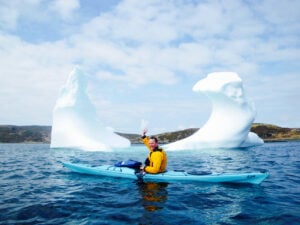At the daily Big Croc Feeding Show, park handlers justifiably use a very, very long stick with food on the end. Crowds gasp when they hear the loud whomp of croc’s jaws slamming together. While friendly park staff are fond of their crocs, it is safe to say the love flows in one direction; the reptiles wouldn’t hesitate to add trainer meat to their strictly monitored diet.
Crocosaurus Cove’s residents are considered problematic because of their aggression and habit of attacking people, boats and cars. Unable to remain in the wild or co-habit with less belligerent creatures on a crocodile farm, they find their way to the Darwin facility. I first met Burt, arguably Australia’s most famous crocodile, having starred with Paul Hogan in the hit 80’s movie Crocodile Dundee. Weighing 700 kilograms, Burt has been in captivity for three decades and has appeared in many documentaries and films. Estimated to be over 80 years old, another croc named Chopper is missing an arm from a territorial tussle in the wild days of his youth. There are other enormous crocs that go by Wendell, Harry and Denzel, but I’ve got a date with the royal couple, William and Kate.
The park’s most successful breeding pair were originally named Houdini and Bess, but crocodiles – who have been observed eating their young – don’t get attached to cute names. The pair were renamed after the royal couple visited Australia in 2011. I’m told that the almost 700-kilogram William is often held in check by his petite 110-kilogram female companion (sounds more like a Harry and Meghan scenario if you ask me). Either way, I have a date with the royal reptiles in the notorious Cage of Death.
After signing the prerequisite waiver, I slip on my bathing suit and meet the staff at the monorail. A ladder is lowered into a five-inch-thick clear cylinder, and I climb inside with a pair of goggles. Immediately I notice scratch marks on the plastic, caused by gnashing teeth and sharp claws. Unlike shark cage diving, the crocs will not be merely curious about my presence; they want to eat me for lunch.








